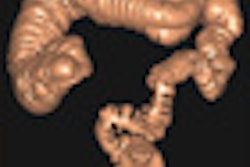Fine-needle aspiration (FNA) appears to be the best way to diagnose lung cancer when low-dose CT finds suspicious lesions, but it can produce false negatives, according to a new study in the Journal of Thoracic Oncology.
False-negative results are particularly prevalent in larger lesions, but extending the CT follow-up period is one way to ensure that true lung cancers aren't left undiagnosed, wrote Dr. Brian Gelbman and colleagues from Weill Cornell Medical College and Mount Sinai Hospital (J Thorac Oncol, May 2012, Vol. 7:5, pp. 815-820).
Aiming to evaluate FNA's accuracy for diagnosing lung cancer, Gelbman and colleagues examined 170 patients with initial negative results at FNA. They found lung cancer in 18 patients, meaning that the FNA results were false negatives. Larger lesions and several other factors were to blame.
Compared to those with true negatives, patients with false-negative results had significantly larger nodules (mean 27 mm versus 17 mm, p = 0.04) and fewer imaging adjustments per needle pass (4.5 versus 6.4, p = 0.01). In addition, more false-negative patients had an undocumented needle tip within the lesion (24% versus 5%, p = 0.004) and pneumothorax during procedures (50% versus 22%, p = 0.04), the group reported.
Considering the variables jointly, pneumothorax, solitary nodule, and which radiologist performed the procedure were statistically significant predictors of false-negative results.
When a benign cytology result is obtained, the FNA procedure should be reviewed to look for the presence of any of the above factors, the study team wrote, adding that false negatives are rare and rarely affect outcomes.
"We recommend that benign FNA biopsies have repeat imaging for at least two years to document stability or resolution of the lesion," they concluded. "If the nodule grows, then repeat biopsy or resection may be required to obtain a definitive diagnosis."



















